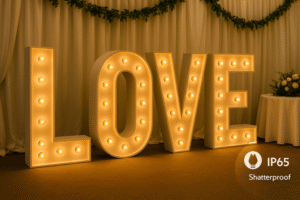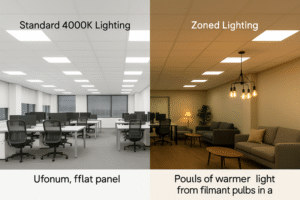Are your light bulbs only doing one job? Standard lighting is fine, but it ignores modern needs for health, comfort, and convenience. Don't get left behind with outdated technology.
Special function LED bulbs are advanced lighting solutions with built-in technology that goes beyond simple illumination. These bulbs can include features like UV-C for sterilization, specific light spectrums to deter insects, and Wi-Fi connectivity for smart remote control, automation, and color-changing capabilities.
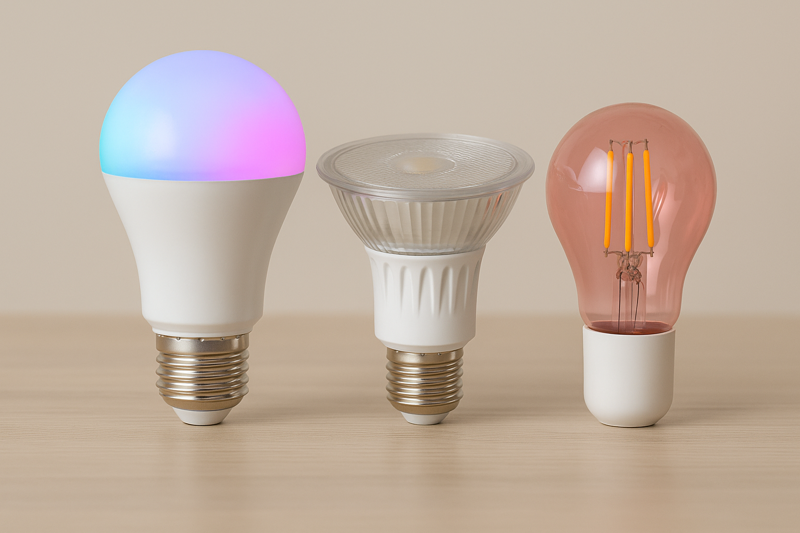
As a marketing manager in the lighting industry for over a decade, I've seen countless trends come and go. But the rise of special function LEDs is different. This isn't just a fleeting novelty; it represents a fundamental shift in how we think about lighting. For B2B clients like Jacky, a product manager in America, understanding these new categories is crucial for staying competitive. It's no longer just about lumens and watts; it's about the value-added features that solve real-world problems for end-users. Let's dive into what these bulbs can really do and why they are becoming a vital part of every product manager's portfolio.
Can a Light Bulb Really Keep Your Home Germ-Free?
Are you constantly worried about invisible germs on your household surfaces? Wiping everything down is exhausting and doesn't always feel like enough. Imagine a light that helps disinfect your spaces automatically.
Yes, certain LED bulbs can enhance your cleaning routine. Germicidal bulbs use UV-C light, a specific wavelength proven to damage the DNA and RNA of viruses and bacteria, rendering them inactive. It's a powerful, chemical-free way to sanitize spaces when they are unoccupied.
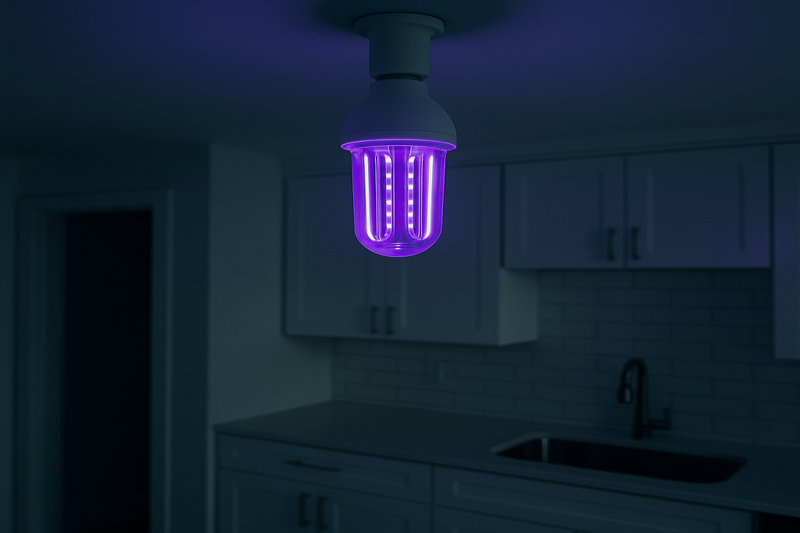
When I first learned about UV-C LED technology, I was skeptical. How can light possibly clean a room? But after digging into the research and seeing the demand grow, especially from clients in the health and hospitality sectors, I became a believer. This technology has existed in commercial settings for years, but its integration into a standard bulb format is a game-changer for both residential and business applications. For my customers, this isn't just about selling a light bulb; it's about offering a health and safety solution—a powerful differentiator in a crowded market.
The Science Behind UV-C Light
UV-C light operates in a specific portion of the ultraviolet spectrum, with wavelengths between 200 and 280 nanometers. When microorganisms like bacteria, viruses, and mold spores are exposed to this high-energy light, their genetic material (DNA and RNA) absorbs the UV-C energy1. This absorption creates thymine dimers2, which are molecular lesions that scramble the genetic code. As a result, the microbes are unable to perform vital life functions or reproduce. They are effectively inactivated and can no longer cause illness. Unlike chemical disinfectants, this is a physical process, meaning microbes cannot develop a resistance to it.
Business Opportunities with Germicidal LEDs
For business owners and product managers, germicidal LEDs3 open up new revenue streams. You can market these bulbs as a premium solution for:
- Homes: Kitchens, bathrooms, and nurseries where hygiene is paramount.
- Offices: Conference rooms and common areas to reduce workplace sickness.
- Retail: Fitting rooms and checkout counters to sanitize high-touch areas.
- Hospitality: Hotel rooms and dining areas to provide guests with peace of mind.
- Clinics & Vets: Waiting rooms and examination areas for an extra layer of protection.
Offering these products positions your brand as innovative and responsive to modern health concerns.
UV-C LEDs vs. Traditional Mercury UV Lamps
| Feature | UV-C LED Bulbs | Traditional Mercury UV Lamps |
|---|---|---|
| Environmental Impact | Mercury-free, safer for disposal. | Contains toxic mercury. |
| Lifespan | Long-lasting, typically over 25,000 hours. | Shorter lifespan, around 8,000-10,000 hours. |
| Durability | Solid-state lighting, highly resistant to shock. | Fragile glass tubes. |
| Operation | Instant on/off, allows for frequent cycling. | Requires a warm-up period to reach full efficacy. |
| Safety Note | Crucial: Direct exposure to UV-C is harmful to skin and eyes. Bulbs must incorporate safety features like motion sensors and timers, and only be used in unoccupied rooms. |
Is There a Light That Actually Keeps Bugs Away?
Are you tired of moths and other flying insects swarming your porch light every evening? Bug zappers are loud and messy, and chemical sprays are a hassle. A simple change of your light bulb can solve the problem.
Yes, insect-repellent bulbs work by emitting light in a specific wavelength (typically yellow or amber) that most flying insects can't see well. Because the bugs aren't attracted to the light source, they are far less likely to gather around your doors, windows, and outdoor spaces.
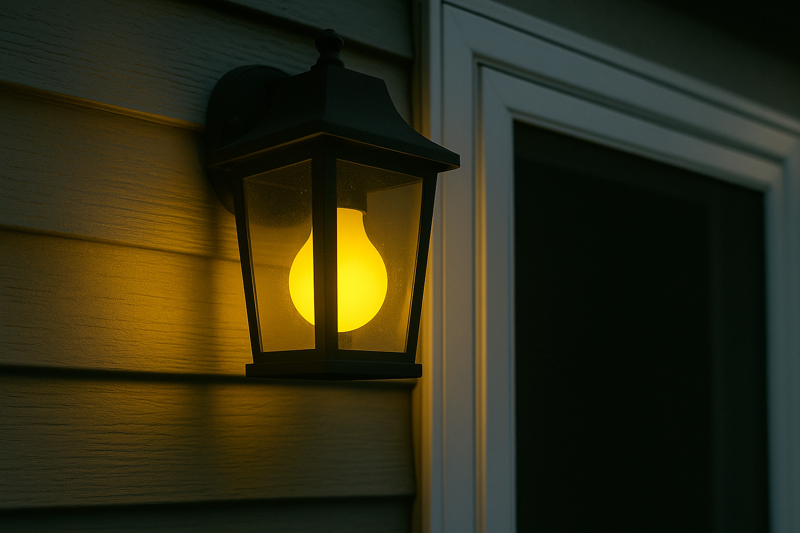
I remember a conversation with a customer from a rural part of the United States who managed a chain of hardware stores. He told me, "Wallson, our biggest seller every spring isn't garden tools, it's bug zappers. People hate the bugs but they also hate the zapping sound." This got me thinking. We immediately looked into our supply chain for yellow-spectrum LED filament bulbs. He tested them and the feedback was incredible. Customers loved that they could enjoy their evenings on the porch without being dive-bombed by insects. It's a simple, elegant solution to a very common problem, and it's a product that practically sells itself.
Why Bugs Are Blind to Yellow Light
The science behind these bulbs is fascinating and simple. Most flying nocturnal insects, like moths and mosquitos, navigate using natural light from the moon and stars. Their eyes are highly sensitive to short-wavelength light, which includes blue, violet, and ultraviolet (UV) light. It's why they are so drawn to standard light bulbs, which emit a significant amount of blue light. Bug-repellent bulbs are engineered to do the opposite. They operate at a longer wavelength, typically above 550 nanometers, which falls into the yellow and amber part of the visible spectrum4. To an insect's eyes, this light is very dim or nearly invisible. Since they can't see it, they aren't attracted to it and will fly right by, leaving you in peace.
Ideal Applications for Your Customers
As a buyer or product manager, think about the applications for this simple technology. Your customers can use these bulbs in:
- Porch and Patio Lights: To create a comfortable, bug-free zone for relaxing outside.
- Garage and Entryway Lights: To prevent insects from flying into the house every time a door is opened.
- Campsites and RVs: For portable, effective bug control without chemicals.
- Restaurant Patios: To improve the dining experience for patrons during warm evenings.
Key Features to Promote
When marketing these bulbs, focus on the benefits that matter most to consumers. It's not just about the technology; it's about the experience.
| Feature | Consumer Benefit |
|---|---|
| Non-Lethal & Chemical-Free5 | A humane and safe alternative to zappers and sprays for children and pets. |
| Energy Efficient | Uses standard LED technology, saving money on electricity bills. |
| Easy Installation | Screws into any standard light fixture. No special equipment is needed. |
| Pleasant Ambiance | The warm, yellow light creates a cozy and inviting atmosphere. |
Can Smart LED Bulbs Truly Simplify Your Life?
Do you ever wish you could control your lights without getting up? Or find yourself fumbling for a light switch in the dark? Adjusting your home's lighting can feel like a constant, manual chore.
Absolutely. Smart LED bulbs connect to your home's Wi-Fi or Bluetooth network, allowing you to control them remotely via a smartphone app or voice commands. You can dim the lights, change colors, and set schedules to automate your entire home's lighting for ultimate convenience.
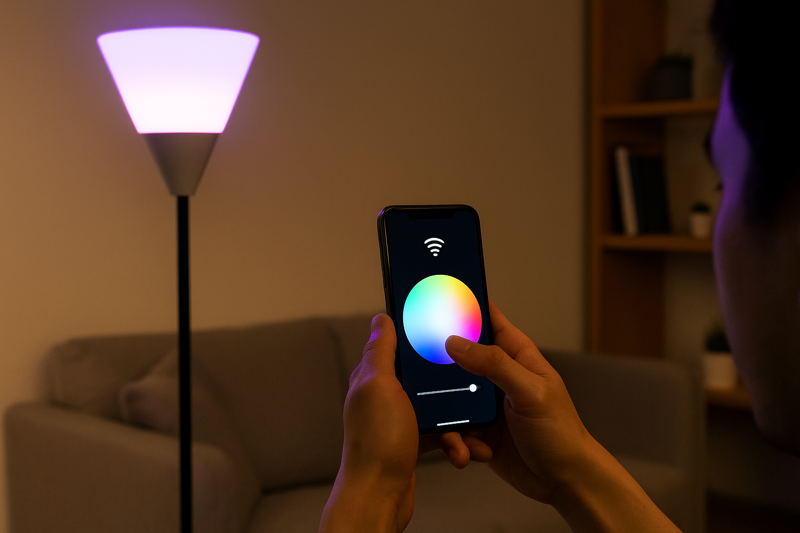
The smart home market has exploded, and as an LED manufacturer, we've had a front-row seat. Initially, many of my B2B clients were hesitant to stock smart bulbs. They worried about technical support and customer confusion. But then something shifted. Major players like Amazon and Google made voice assistants a household staple. Suddenly, customers weren't just asking for bulbs; they were asking for "bulbs that work with Alexa." I advised a major retail buyer, Jacky, to start with a simple, user-friendly smart bulb. The sales were immediate. People love the convenience. It’s no longer a niche gadget; it’s an expected feature that makes a home feel modern and responsive. Providing reliable, easy-to-use smart bulbs is now essential.
How Smart Bulbs Connect and Operate
Smart bulbs are more than just lights; they're tiny computers. Inside each bulb is a standard LED element for light, plus a small chip that allows it to communicate wirelessly. There are two primary connection types:
- Wi-Fi: These bulbs connect directly to your home's Wi-Fi router. This makes setup very simple as you don't need any extra hardware. Control is done through a smartphone app, and because it's connected to the internet, you can control your lights from anywhere in the world.
- Bluetooth Mesh6: These bulbs connect directly to your phone via Bluetooth when you are in range. The "mesh" part is clever; each bulb can talk to the other bulbs, extending the range throughout your house without needing a central hub. This is great for simple, localized control.
- Hub-Based (Zigbee/Z-Wave): These bulbs require a separate "hub" or "bridge" that plugs into your router. The hub acts as a central translator for the bulbs. While it's an extra piece of hardware, this system is often faster, more reliable, and can support dozens of devices without slowing down your Wi-Fi7.
Transformative Features That Add Real Value
Smart bulbs offer more than just remote on/off control. They provide features that can genuinely improve a person's quality of life and the ambiance of their home.
| Feature | Description & User Benefit |
|---|---|
| Dimming & Brightness Control8 | Adjust brightness levels without needing a dimmer switch. Perfect for setting the mood for a movie or brightening a room for reading. |
| Color Changing (RGB) | Select from millions of colors to match your decor, celebrate a holiday, or create a specific vibe. Great for parties or themed rooms. |
| Tunable White | Adjust the color temperature from a warm, cozy yellow to a cool, energizing blue-white. Helps sync with your body's natural circadian rhythm. |
| Scheduling & Automation | Program lights to turn on at sunset, turn off when you leave, or simulate presence while on vacation for added security. |
| Voice Control Integration9 | Connect with Amazon Alexa, Google Assistant, or Apple Siri to control lights with simple voice commands like, "Hey Google, turn the living room lights blue." |
Conclusion
Special function LED bulbs are transforming our spaces. From sanitizing rooms to repelling bugs and offering smart automation, they provide practical solutions that go far beyond simple illumination.
Learn about the science of UV-C energy and its effectiveness in killing harmful microbes. ↩
Discover how thymine dimers affect microbial DNA and contribute to effective disinfection. ↩
Explore the advantages of germicidal LEDs for effective disinfection and innovative business solutions. ↩
Understanding the visible spectrum can enhance your knowledge of how light affects insects and improve your product marketing. ↩
Exploring non-lethal methods can provide insights into humane pest control solutions, appealing to eco-conscious consumers. ↩
Learn about Bluetooth Mesh technology and how it enhances connectivity and control of smart bulbs. ↩
Explore the advantages of Wi-Fi smart bulbs, including easy setup and remote control from anywhere. ↩
Discover how dimming features can enhance your home ambiance and improve your quality of life. ↩
Find out how voice control can simplify your life by allowing hands-free operation of your smart lighting. ↩






